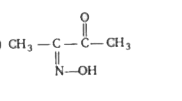C6H6HNO3−−−→H2SO4PSn/HCl−−−−→QNaNO2−−−−→HClRH3PO2−−−→H2OS
The end product S in the given sequence of reactions is
Benzoic acid
benzene
phenol
chlorobenzene.
To solve the given sequence of reactions step by step, we will analyze each reaction and identify the products formed.
Step 1: Nitration of Benzene
- Starting Compound: Benzene (C₆H₆)
- Reagents: H₂SO₄ and HNO₃
- Reaction: The nitration of benzene occurs when it reacts with concentrated sulfuric acid (H₂SO₄) and concentrated nitric acid (HNO₃). The nitronium ion (NO₂⁺) generated in this reaction will substitute a hydrogen atom on the benzene ring.
- Product: Nitrobenzene (C₆H₅NO₂)
Step 2: Reduction of Nitrobenzene
- Starting Compound: Nitrobenzene (C₆H₅NO₂)
- Reagents: Sn and HCl
- Reaction: Nitrobenzene is reduced to an amine using tin (Sn) in hydrochloric acid (HCl). This reduction converts the nitro group (NO₂) into an amino group (NH₂).
- Product: Aniline (C₆H₅NH₂)
Step 3: Formation of Benzene Diazonium Salt
- Starting Compound: Aniline (C₆H₅NH₂)
- Reagents: NaNO₂ and HCl (at 0 to 5 degrees Celsius)
- Reaction: Aniline reacts with sodium nitrite (NaNO₂) and hydrochloric acid (HCl) to form benzene diazonium chloride. This reaction occurs at low temperatures to stabilize the diazonium salt.
- Product: Benzene diazonium chloride (C₆H₅N₂Cl)
Step 4: Hydrolysis of Benzene Diazonium Salt
- Starting Compound: Benzene diazonium chloride (C₆H₅N₂Cl)
- Reagents: H₃PO₂ and H₂O
- Reaction: The benzene diazonium salt undergoes hydrolysis in the presence of phosphorous acid (H₃PO₂) and water, resulting in the loss of the diazonium group and formation of benzene.
- Product: Benzene (C₆H₆)
Final Product
- The end product S in the given sequence of reactions is Benzene (C₆H₆).
Summary of Products
- P: Nitrobenzene (C₆H₅NO₂)
- Q: Aniline (C₆H₅NH₂)
- R: Benzene diazonium chloride (C₆H₅N₂Cl)
- S: Benzene (C₆H₆)
Answer
The end product S in the given sequence of reactions is Benzene (C₆H₆).
---
- Starting Compound: Benzene (C₆H₆)
- Reagents: H₂SO₄ and HNO₃
- Reaction: The nitration of benzene occurs when it reacts with concentrated sulfuric acid (H₂SO₄) and concentrated nitric acid (HNO₃). The nitronium ion (NO₂⁺) generated in this reaction will substitute a hydrogen atom on the benzene ring.
- Product: Nitrobenzene (C₆H₅NO₂)
Step 2: Reduction of Nitrobenzene
- Starting Compound: Nitrobenzene (C₆H₅NO₂)
- Reagents: Sn and HCl
- Reaction: Nitrobenzene is reduced to an amine using tin (Sn) in hydrochloric acid (HCl). This reduction converts the nitro group (NO₂) into an amino group (NH₂).
- Product: Aniline (C₆H₅NH₂)
- Starting Compound: Aniline (C₆H₅NH₂)
- Reagents: NaNO₂ and HCl (at 0 to 5 degrees Celsius)
- Reaction: Aniline reacts with sodium nitrite (NaNO₂) and hydrochloric acid (HCl) to form benzene diazonium chloride. This reaction occurs at low temperatures to stabilize the diazonium salt.
- Product: Benzene diazonium chloride (C₆H₅N₂Cl)
- Starting Compound: Benzene diazonium chloride (C₆H₅N₂Cl)
- Reagents: H₃PO₂ and H₂O
- Reaction: The benzene diazonium salt undergoes hydrolysis in the presence of phosphorous acid (H₃PO₂) and water, resulting in the loss of the diazonium group and formation of benzene.
- Product: Benzene (C₆H₆)
- The end product S in the given sequence of reactions is Benzene (C₆H₆).
- P: Nitrobenzene (C₆H₅NO₂)
- Q: Aniline (C₆H₅NH₂)
- R: Benzene diazonium chloride (C₆H₅N₂Cl)
- S: Benzene (C₆H₆)
The end product S in the given sequence of reactions is Benzene (C₆H₆).
Topper's Solved these Questions
- AMINES BOOK - NCERT FINGERTPS ENGLISHCHAPTER - AMINES EXERCISE - HOTS
6 Videos
- AMINES BOOK - NCERT FINGERTPS ENGLISHCHAPTER - AMINES EXERCISE - NCERT Exemplar
24 Videos
- AMINES BOOK - NCERT FINGERTPS ENGLISHCHAPTER - AMINES EXERCISE - Preparation Of Amines
5 Videos
- ALDEHYDES, KETONES AND CARBOXYLIC ACIDSBOOK - NCERT FINGERTPS ENGLISHCHAPTER - ALDEHYDES, KETONES AND CARBOXYLIC ACIDSEXERCISE - Assertion And Reason
15 Videos
- BIOMOLECULESBOOK - NCERT FINGERTPS ENGLISHCHAPTER - BIOMOLECULESEXERCISE - Assertion And Reason
15 Videos
Similar Questions
Knowledge Check
Ph−O∣∣C−CH3NaNO2−−−−→HCl(A)AC2O−−→heat(B)H3O+−−−→(C)
Product ( C) of the above reaction is :APh−CO2HBPh−O∣∣C−CO2HCPh−O∣∣C−O∣∣C−HDPh−O∣∣C−CH2OHCH3−ONa∣C=CH2HC=CH−−−−−→H+−−→H2−−−−−−→pd−BaSO4ΔAl2O3−−−→
End product of the reaction is :AH2C=CH−C∣CH3−CH2BCH3−CH=CH−CH=CH2CH2=CH−cH=cH2DH2C=CH−CH2−CH=CH2CH3CH2−O∣∣C−CH3NaNO2−−−−→HCl, Major product of this reaction is :
ACH3C∣NOH−O∣∣C−CH3BCH3−CH2−O∣∣C−CH=N−OHC D
D
C6H5N2ClSnCl2/HClA→C6H5CHO−−−−−−→(B)
The product (B) in the above sequence of reaction is
View SolutionANaNO2/HCI−−−−−−−−→0∘CBH2O−−→373KCCH2N2−−−→HBF4 Anisole [A] is :
View Solutionp-Nitro phenol(X)(C2H5)2SO4/NaOH−−−−−−−−−−−−−→(1)Sn/HCl−−−−→(2)(Y)NaNO3/HCl−−−−−−−→(3)C6H5OH−−−−→(4) product is :
View SolutionXSn/HCl−−−−→NaNO2−−−−→HClZCuCN−−−→Δ(P)H3O−−→Ph−COOH correct options is/are:
View SolutionH−C=C−HHgSO4−−−→H2SO4(A)(1)NH3+HCN−−−−−−−−−→(2)H3O⊕(B), Product (B) of given reaction is :
View Solution

